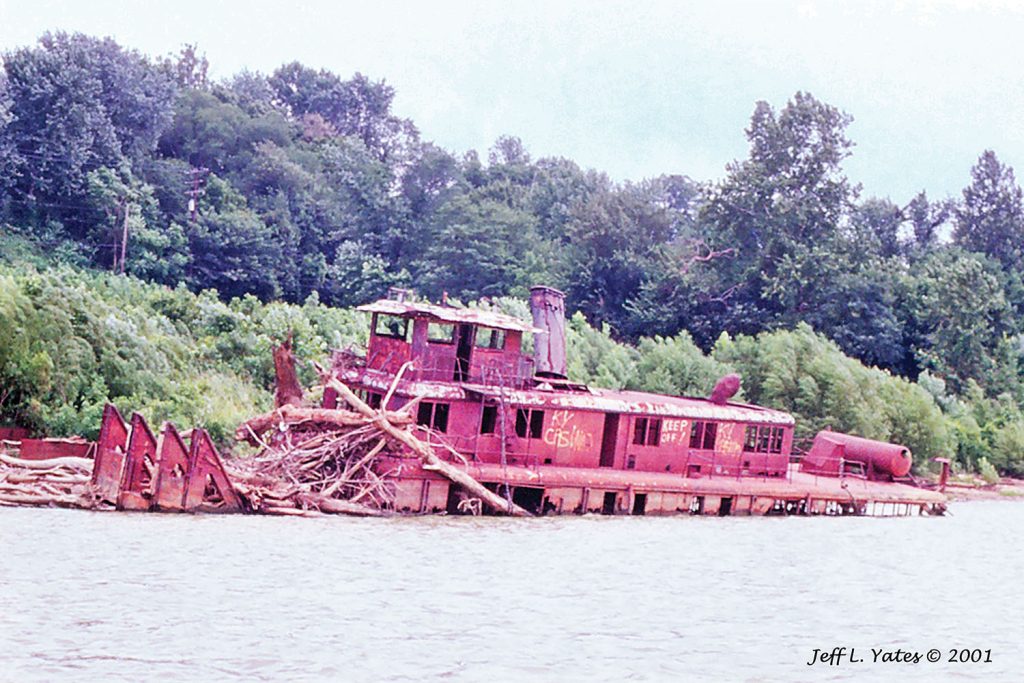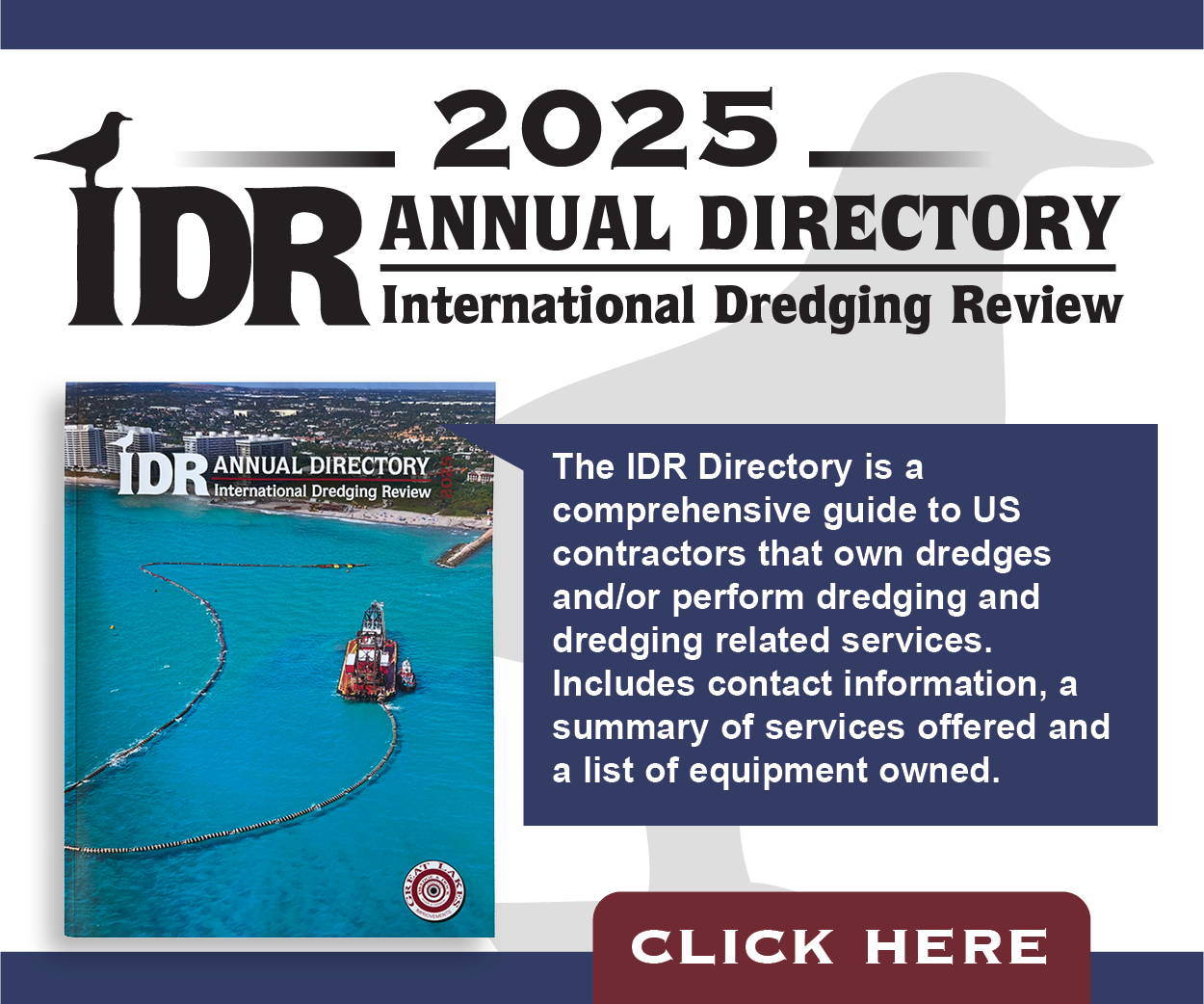In the last column, we looked at the Kansas City Socony, built by the Elliott-Fairfax Shipyard at Kansas City, Kan., in 1937. It was 125 by 32 (a typo in the last column noted the width at 52 feet, which was wrong) and had 1,020 hp. from a pair of Superior diesels. This was the first river towboat built for Socony, and it racked up a record of “firsts” for that company. Shortly after completion in 1937, it picked up the first gasoline loaded at the Socony facility at Kansas City and delivered that as the first tow into the Socony dock at St. Paul, Minn. In 1939, it delivered the first tow of gasoline into Omaha, Neb., and in 1940 it towed the first gasoline into Sioux City, Iowa. Some subtle changes were made to the boat over time. The searchlights that had originally been on each side of the front of the pilothouse had been moved to the top of that structure. The large white “S” was gone from the sides of the smokestack, replaced by a white shield with a red Pegasus in the center, and the traditional “nighthawk” post forward of the pilothouse had been removed.
Socony added other, larger boats to its fleet and, in 1951, the Kansas City Socony was sold to new owners. In the August 4, 1951, issue of The Waterways Journal, J. Mack Gamble had as the lead item in his Upper Ohio News column that Atlas Towing Company, Parkersburg, W.Va., had announced that Atlas had purchased the Kansas City Socony. Atlas had an ongoing contract towing slag from Standard Slag Company, Weirton, W.Va., to points on the Upper Ohio and Kanawha rivers. The 400 hp. diesel sternwheel towboat Atlas had been in this trade for the company for some time with Capt. Ralph Tuel in charge.
In the same column in the August 11 WJ, Gamble reported that the Kansas City Socony was now “Port of Pittsburgh, Pa.,” and had entered the slag trade in the place of the sternwheel Atlas. “The boat will be painted white, instead of the Socony red, and will be named A.V. Criss, Jr.” This new name was in honor of the son of the firm’s president, A.V. Criss. Capt. Ossie Pilgrim, master of the boat for Socony, had made the trip around from St. Louis with Capt. Tuel, formerly of the sternwheel Atlas, who would be master of the newly acquired boat for Atlas Towing. The rest of the crew would include Capt. Brady Smith, pilot; Bill Brookman and Joseph Schodt, engineers; Flaves Welch, cook; and John Marlow, Holly Friend and Tom Jones, deckhands.
It was interesting that this story also stated that the boat “will be equipped with radio,” since the Kansas City Socony had been assigned the radio call letters KPHI for some time prior to 1950, and then the call sign WA 6713. (This would again change about 1955 to the call sign that this writer remembers so well – WF 8238.) Gamble again mentioned the boat in his column in the issue of August 25, “The A.V. Criss, Jr., formerly the Kansas City Socony, was upbound here (Clarington, Ohio) on August 13, making her first trip under the new name.” After this the boat would often appear in the Upper Ohio news columns, as it was in this trade for several years, running up with empties and down with loads almost like a train on a track. According to the Inland River Record, the boat was repowered in 1957, again with Superiors, and then had 1,200 hp. This may have simply been the addition of turbochargers to the existing engines.
In February 1967, Atlas Towing purchased the 2,400 hp. Coal King, renaming it A.V. Criss in June of that year. After this, the A.V. Criss, Jr. became a spare boat, and in August 1970 it was sold to Kanawha Towing Company, Inc., Henderson, W.Va. It was again sold in May 1971 to G&C Towing Inc., Point Pleasant, W.Va., which named it Virgie Mae. G&C was headed by Capt. Robert H. Bosworth, and I have always been told that this boat had been named after his mother-in-law. G&C usually had the Virgie Mae in the Kanawha River trade, as well as towing in the near Ohio River areas. More often than not, Capt. “Snooks” Davis would be on it.

In September 1978, the Virgie Mae was sold to Ohio Valley Marine Service, Henderson, Ky. In February 1979, the boat was moored next to the left bank near Ohio River Mile 803 when it sank. Various attempts to raise it were unsuccessful, and it remained there, a landmark of sorts, for the next 22 years. Over time the paint wore off the cabin, leaving only rust (and maybe some scraps of Socony red), the engine and hull spaces gradually filled with mud, and the lower cabin bulkheads were wasting away. The logo shields on the sides of the stack lost the coatings that over the years had shown an “A” for Atlas and “G/C” for more recent owners to once again depict the red Pegasus winged horse. Somewhat indignantly, the stack itself was knocked askew at some point.
News stories from the files of Capt. Jeff Yates indicate that by 2000, local residents were beyond weary of having the unsightly wreck near an area slated for a $3 million dollar riverfront project. Estimates to have the sunken boat removed proved to be quite expensive, however. Finally, in 2001, a local contractor, Mark Bowling, offered to remove the portions of the vessel above the surface of the river at low water and cover the remainder with riprap. The city of Henderson, Ky., would purchase the stone, and Bowling would donate his services. Once extolled for being the “first” at many accomplishments, the forlorn remains of a once proud boat were virtually buried in the end. No vestige of the boat remains in view today, although portions of it are indeed below the rock now covering the site.
Caption for top photo: Virgie Mae above Gallipolis Lock, June 24, 1974. (Jeff Yates photo)
Capt. David Smith can be contacted at davidsmith1955obc@gmail.com.



